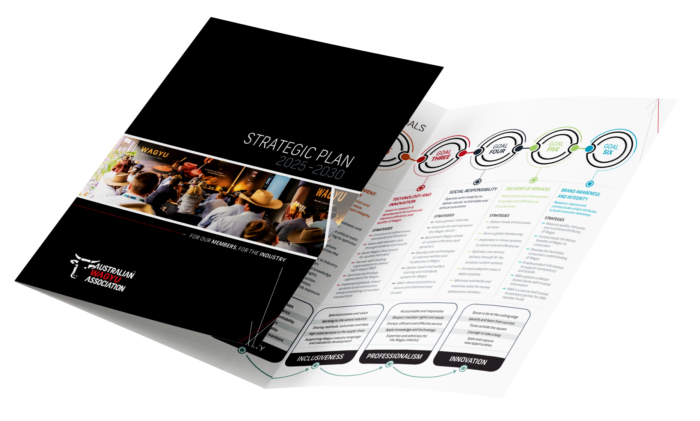In 2024, the Australian Wagyu Association Board has been dedicated to developing a new Strategic Plan for 2025-2030, aimed at enhancing the AWA’s growth by delivering even more value return from the investments made by our members. As a public company constituted with member stakeholders instead of shareholders, we seek to provide value to all members large and small, breeders and supply chain participants. All members of the AWA are equal in the eyes of the AWA Constitution.
This new strategic plan expands on the fundamental principles of the AWA 2020-2025 Strategic Plan to Support, Promote and Advance the Production of Wagyu. It also encapsulates the vision from the AWA’s 10-year roadmap to establish itself as the global leader in innovation and delivery in the Wagyu industry. Delivering on the strategic intent of these prior corporate plans has enabled significant and rapid progress by the AWA for the benefit of all members. Today, we stand as the envy of the world as a collective of Wagyu breeders and supply chain stakeholders.

Launched during the AWA’s Tech Workshop in Brisbane, the 2025-2030 Strategic Plan clearly defines our corporate purpose: “For our Members, For the Industry.” It recognises that our key principles—”Support, Promote, and Advance”—along with our goal of being the “World Leader in Innovation and Delivery for the Wagyu Sector,” are all driven by our fundamental mission to deliver value for our members and the entire Wagyu Sector.
Over the past decade, we have built the most comprehensive and diverse database of animals, performance data, and genotypes contributed by our global community of members. This achievement is a result of our collaborative efforts of AWA members to advance the industry as a whole.
As we face a limited gene pool shared worldwide, our future relies on our ability to thoroughly understand genetic variation, diversity and trait performance across the entire Wagyu population. We aim to foster a culture of inclusiveness and integrity ensuring that every member’s contributions are respected and valued, which will ultimately enhance the AWA’s tools and services.
This plan outlines the AWA’s objectives for the next five years of industry advancement. You can download a copy of the plan here.
Watch the launch of the plan at the recent AWA Technical Workshop.
